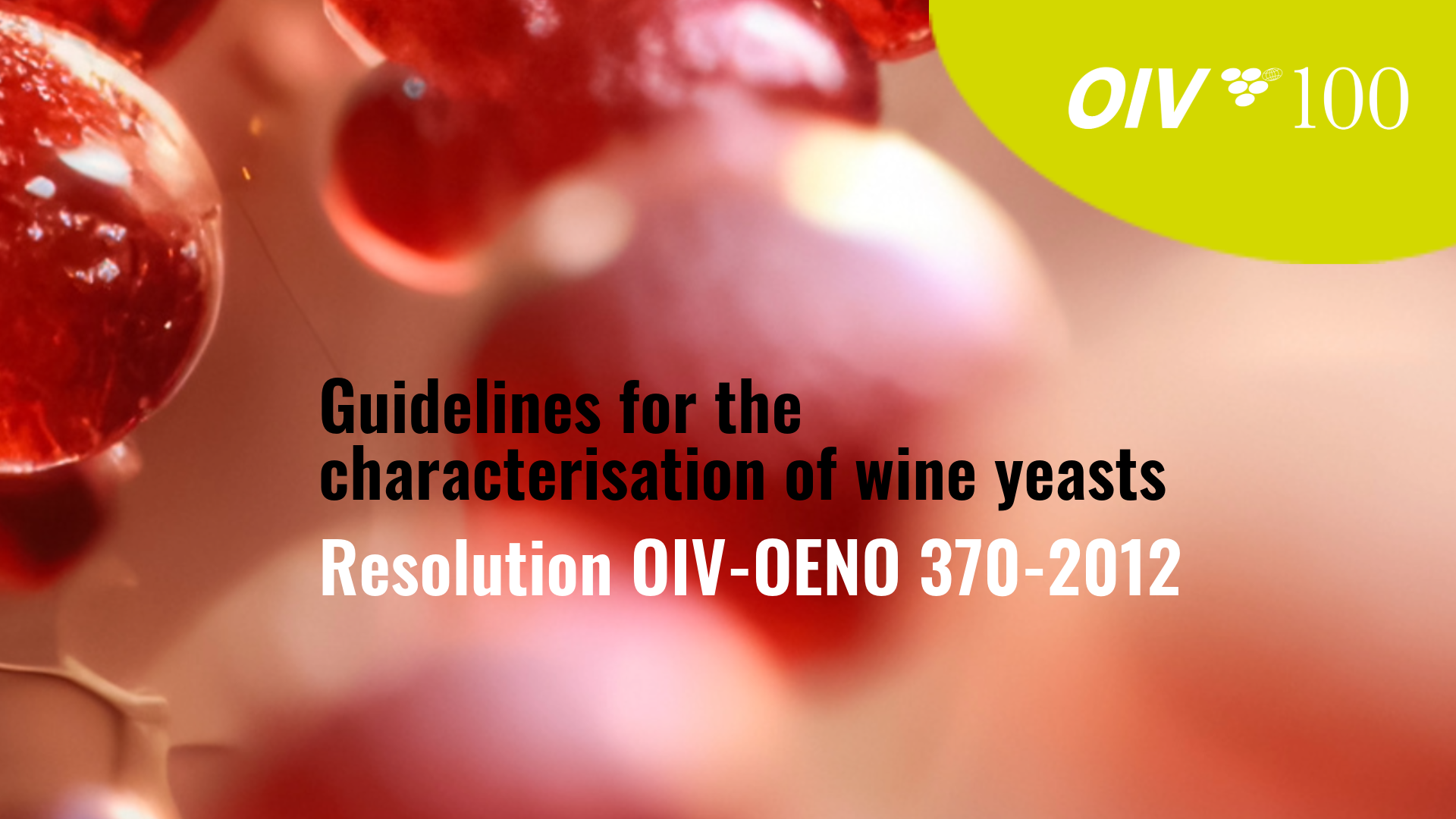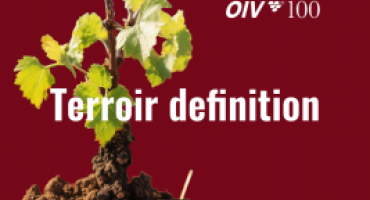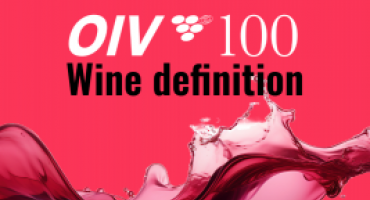Les célébrations du centenaire se poursuivent, avec ce mois-ci sous les projecteurs une résolution fondatrice, « Lignes directrices pour la caractérisation des levures de vinification », un texte fondamental pour l'œnologie moderne. Joignez-vous aux célébrations et découvrez le grand impact que cette résolution a eu sur l’art et la science de la vinification.


In the art and science of winemaking, yeast acts as a silent hero, not only for transformation of natural sugar content of grape into alcohol, but also its role is fundamental in shaping the character and quality of wines. Thanks to the microbiological and oenological advancements, yeasts can be isolated from the vitivinicultural environments, and select them according to their characteristics and the desired wine objectives.
The resolution OIV-OENO 370-2012 “Guidelines for the characterization of wine yeasts of the genus Saccharomyces isolated from vitivinicultural environments” was adopted during the 35th World Congress of Vine and Wine which took place on 22nd of June 2012 in Izmir, Turkiye. This resolution serves as a comprehensive framework outlining characterisation methods of yeasts to determine technological aspects for white and red wine vinification, organoleptic aspects for wine quality, as well as food safety aspects. One of the essential goals of this resolution is also to guarantee the vitivinicultural origin of the selected winemaking yeasts.
A journey from the ancient origins of yeast in winemaking to the pivotal role in modern oenology
We invited three distinguished experts who actively contribute to the work at the OIV in the Microbiology Expert Group, to share their insights on the adoption process of the resolution, its significance in winemaking, and its spread-out effects on the sector.
These testimonies will take you to a journey, starting from the ancient origins of yeast in winemaking until the pivotal role of yeasts in modern oenology.
The experts also highlight the importance of this resolution for the future of winemaking, noting the increasing interest in different strains of both Saccharomyces and non-Saccharomyces yeasts. In the context of current challenges caused by climate change, the selected yeast strains offer winemakers biological tools to ensure an efficient and complete fermentation process and control enhance wine quality.
« This resolution takes into account a large number of selection criteria linked to technological criteria, sensory quality criteria for wines which make it possible to guarantee the quality of yeast selections for professionals»,
by Hervé Alexandre (Institut Universitaire de la Vigne et du Vin Jules Guyot)
The use of Saccharomyces in winemaking can be traced back thousands of years. Saccharomyces cerevisiae, commonly known as brewer's yeast or baker's yeast, is a species of yeast that has been used by humans for fermentation purposes for millennia. The ancient civilisations, particularly those in Mesopotamia and Egypt, likely stumbled upon fermentation processes accidentally, leading to the discovery of alcoholic beverages like wine.
However, it was not until the Middle Ages that the role of yeast in fermentation was better understood. Monks and other early winemakers observed that fermentation occurred more predictably when using certain types of grape must or juice, and they identified Saccharomyces cerevisiae as the key microorganism responsible for this process.
Over time, winemakers began to cultivate specific strains of Saccharomyces cerevisiae for winemaking, selecting those that produced desirable characteristics in the finished wine, such as enhanced flavours, aromas, and stability. Today, Saccharomyces cerevisiae is a standard component of modern winemaking, and winemakers often use commercial yeast strains specifically selected for their intended style of wine. These strains contribute to the complexity and consistency of the final product.
“This resolution has been a collaborative effort containing the know-how of many researchers in yeast microbiology worldwide that are experts at the OIV”,
by Antonio Morata (Universidad Politécnica de Madrid), OIV Microbiology Expert Group President
Yeast selection is a key activity for the wine industry, and it has been developed from the middle of the XX century. Currently several hundreds of strains are available at commercial level mainly as active dry yeast. The use of this yeasts with suitable properties makes safer and more reliable the fermentation process. Initially, yeast selection was focused on Saccharomyces cerevisiae looking for optimal strains to be adapted to wine making with good fermentation performance, low production of volatile acidity and other off-flavours, resistant to high levels of SO2, and low or high fermentation temperatures.
Later were considered other parameters such as the influence in wine flavour by its specific metabolomic profile, the influence in colour stability or the improvement of mouth feel. The OIV considering the interest for the wine sector studied and promoted the Resolution OIV-OENO 370-2012 on yeast selection on 2012, in which was strongly involved the MICRO experts group.
“The OIV resolution 370-2012 is an extraordinary bridge between the past and the future”,
by the Microbiology Experts from the Italian Delegation: Angela Capece (Università degli Studi della Basilicata), Lisa Granchi (Università degli Studi di Firenze), Raffaele Guzzon (Fondazione Edmund Mach), Tiziana Nardi (CREA –Consiglio per la Ricerca in Agricoltura e l'Analisi dell'Economia Agraria) and Patrizia Romano (Universitas Mercatorum)
The yeast in winemaking plays a fundamental role, being the most important organism that, through a series of metabolic pathways, produces not only alcohol but also several other products that can influence the resulting wine. Saccharomyces cerevisiae is the most significant yeast species involved in wine fermentation due to its vigorous fermentation capabilities, tolerance of relatively high levels of alcohol and sulphur dioxide as well as its ability to develop at the wine’s low pH.
Traditionally, this yeast has been used as a starter culture to conduct alcoholic fermentation due to its optimal fermentative properties.
In this context, having guidelines for characterising Saccharomyces yeasts has become more and more useful over time.
This work took almost five years of discussion until the OIV Oenology Commission experts reached a consensus on the detailed guide to characterising Saccharomyces. The process of this resolution began in 2007, in the March meetings in Paris, and involved the activity and contribution of experts from the OENO-Microbiology group from numerous countries, who, over the years, have implemented the guide of oenological characteristics for the selection of Saccharomyces yeasts.

